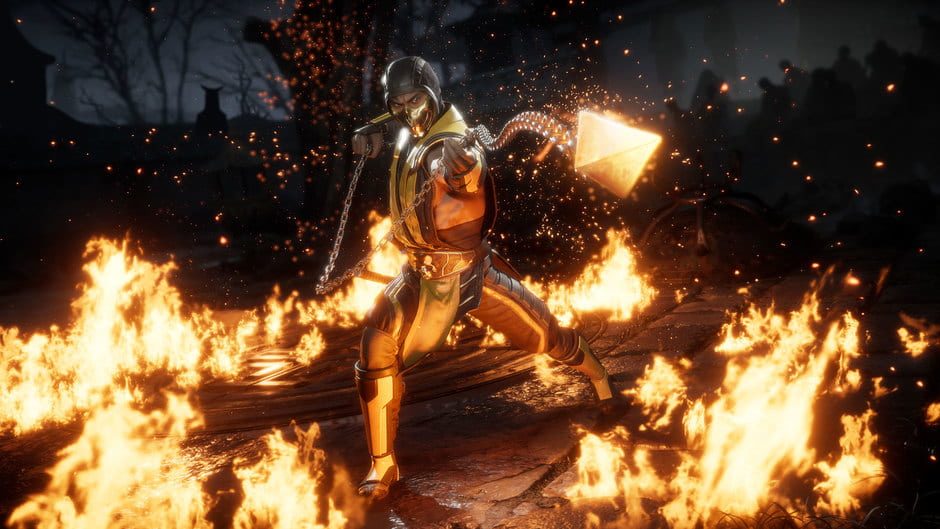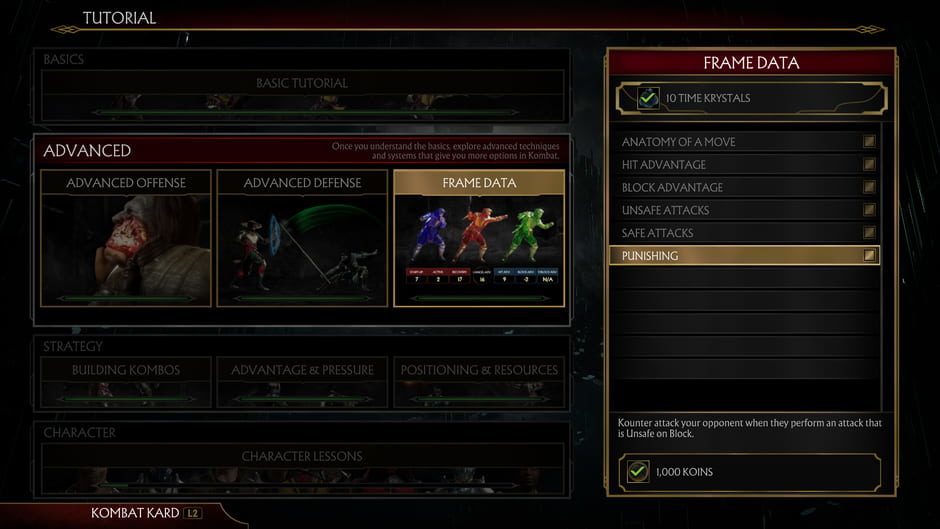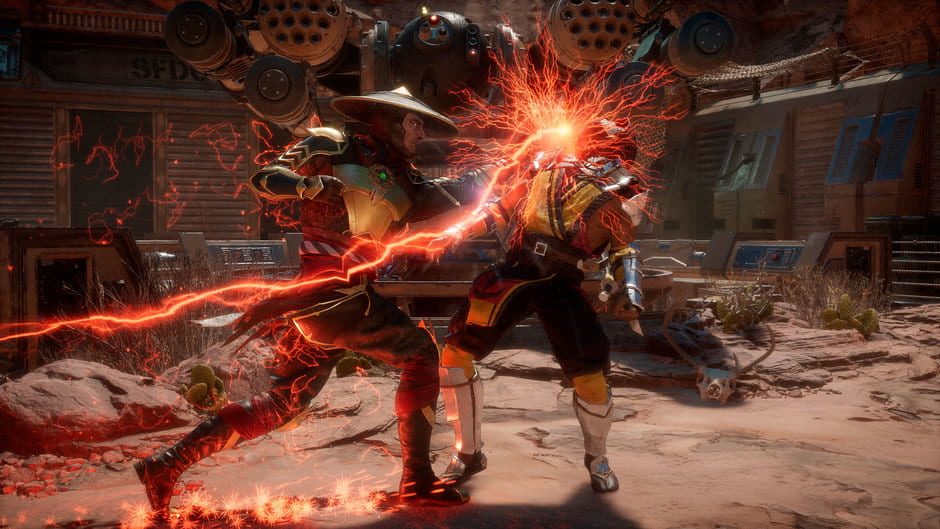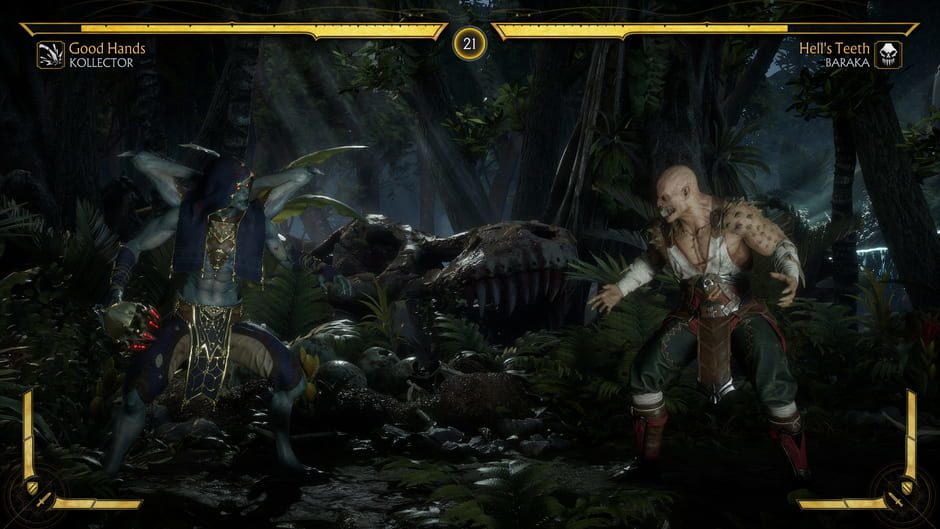Fighting games, by their very nature, are already the most accessible video game genre out there. This is largely because there’s never any question of where your opponent is. In most fighting games, you’re not going to lose track of them, because they’re always right across from you. This foreknowledge is only one part of the equation, though. The rest of it is audio. I will first explain how this works, and then go over why Mortal Kombat 11 is an outstanding example in the genre.

There are a lot of things audio conveys in a fighting game. If you want to know which side of the screen you’re on, ask yourself which speaker your character’s particular sound effects are coming out of. It’s possible to determine distance as well, based on how much of the center channel is present when both characters make noise. If you both are quite close to one another, then both sets of sounds should be coming from center left, and center right. The exception to this is when one player has driven the other into a corner. In that case, both sets of sounds would be coming from either far left or far right. So yes, distance and positioning are related accurately through audio, but of course there’s more.
I’ve already mentioned character-specific sounds several times, but their importance cannot be understated. Your character’s specific voice, the sounds of their attacks, all are important. You need to know when you’re getting hit, or when your attacks are connecting with your opponent, and these things are all very well conveyed by audio. Force feedback is a component of this as well, but I feel very comfortable saying I could play Mortal Kombat 11 without force feedback, and only really have trouble in mirror matches, where both characters are the same.

So we’ve established that, in modern fighting games, each character sounds different, as does each attack. Now we’re getting into things that very specifically refer to Mortal Kombat 11, as not every fighting game can claim to have gone to such great lengths when it comes to audio. Many characters have moves that give them some sort of buff, or special property. Well, in the case of MK11, the existence of these buffs is actually conveyed to us with audio! It’s one thing to hear a fiery “fwoof” sound when Liu Kang activates his flaming fists, but it’s something quite special indeed when the sound of that fire persists, correctly positioned at Liu Kang’s location, for the entire duration of that flame fist buff. Koatal Khan creates a sunbeam that heals him and damages you if you stand in it, and this too is conveyed to us, as a hissing sound can be heard from the beam’s location. Several consumable objects also create buffs or provide some kind of assistance, and these all have their own sounds as well! It’s monumentally helpful on attack and defense to know exactly what is going on at any given point.
That’s not all, though. Sounds exist in MK11 to convey other useful bits of information. A high-pitched ding sound will let you know that one bar of your offensive meter, or that of your opponent, has regenerated. A clinking sound advises you the same with your defensive meter. A loud double ding lets you know that either you or your opponent can now use their Fatal Blow attack. These sounds play from either the left or right side depending on which player they are intended for, left side being player one, right being player 2. This allows you to effectively track your opponent’s meters just as you track your own. Think I’m done yet? Nope!

Ah, tutorials. They teach you things. At least, they’re supposed to. Currently, the tutorial system in MK11 isn’t great for us in that the tutorial text is not narrated, leaving us in a position of not learning as much as we potentially could. However, it’s certainly not all bad, as there is one accessibility feature in tutorial mode that is a tremendous help. When given a task in a tutorial, you can press a button to play a demonstration of what you’re supposed to do. What makes this great, though, is that the demonstration comes with extra sounds that tell us which buttons we need to press to complete each task, played at the moment we would need to press each button. The face buttons are indicated by a series of high-pitched beeps, while directional buttons are indicated with lower-pitched boops. It is possible to memorize which specific sound means which specific button, though in my personal opinion the pitches they use for each button need to be a bit more separated than they are. At any rate, blocking is indicated by a loud clink, amplifying a move is indicated by a beep that is far lower in pitch than the face buttons, and even pressing the button to perform a defensive roll is indicated with a 2-layered tone. All these sounds are extremely quick since buttons must often be pressed quickly and sequentially to perform complex moves and combos. This, however, is why I believe the pitches should be more separated, as listening to very similar sounds very close together can get a bit confusing. Nevertheless, the fact that this system even exists is a tremendous boon to us.

Still with me? Do you think I’m done yet? The answer is still no. You see, Netherrealm studios is aware of their blind players, and have added some things specifically for us. I suspect the tutorial sounds came from this idea, though they’re apparently active for everyone. There are 2 features, though, that can be turned on specifically for the blind. The first is environmental audio cues. While fighting in MK, there are certain bits of the stage that can be interacted with, either to be vaulted from, or to use as a weapon against your opponent. Activate this feature, and 2 more audio cues are enabled. A lower-pitched, repeating tone plays if you are near an interactable and have the meter to use it, and a higher pitched one plays if this is true of your opponent. Just another excellent addition to the audio of this game.
The second feature is perhaps one of the most ambitious of all. I refer to the menu narration feature. Once active, the soothing voice of Jamieson Price, who also serves as the game’s announcer, reads a surprisingly large portion of the game’s menus. This is done using audio files that play when an item is highlighted. Move through the front menu, and hear him say “Conquer. Fight. Customize. Learn.” In many cases, branching menus are read to us as well. Click on conquer and you’ll hear “Story. Towers of time. Classic Tower.” It’s a truly great feature, and removes the need for us to memorize many things, as we would normally do. It is, however, incomplete. Not every menu is narrated, and I’ve already mentioned the tutorial text. There is tremendous potential here to push this game’s accessibility into the stratosphere, but the existence of this feature is fantastic nonetheless.

Just one more thing, I promise. The audio team at Netherrealm has even given us little in-game details we don’t necessarily need in order to play! Nevertheless, we notice them, and we appreciate them. A great example of this is the character of Kabal, who wears a metallic mask in combat. If you defeat him, and perform a fatality against him, you can actually hear the sound of his mask falling off as the fatality begins. As I said, certainly an unnecessary detail, but one that helps us to create the moment in our heads.
I would like to take a second to thank you for reading all this. I know this article is long-winded, and goes over a ton of things, but I do all this to make a point. The blind gaming community really and truly cares about audio, because we have to. Well-designed audio for us is absolutely an accessibility feature. If Netherrealm hadn’t added any of the blind-specific features I mentioned here, they would still stand out for all the other helpful bits. Every single little tiny detail matters. If you’re designing the audio for a game, and you’re asking yourself if a thing should have audio, if it’s one of those things that could have audio, but you could get away with not adding it, you should totally do it. You never know how you might be helping someone. Your carefully-crafted audio might just make a game that was otherwise unplayable by the blind an experience we can fully enjoy. We will notice your work, and if it’s particularly helpful, such as in these cases, we’ll call it out. You guys deserve it. Thanks for all the work you do, and keep it up!


Comments